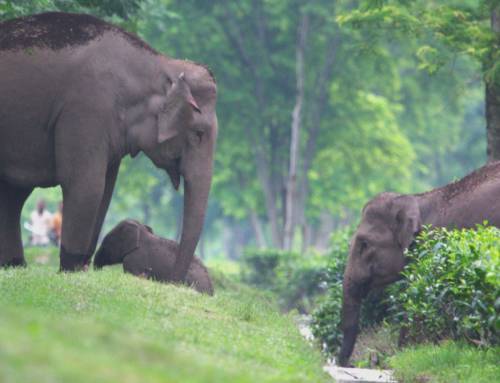Author: Vinni Jain
This is the first article from our two-part series highlighting the latest research done by CWS scientists.
Earth’s surface is covered with towering mountain ranges, vast oceans, gaping canyons, and fast-flowing rivers, which, for many living creatures, represent insurmountable barriers to movement. For us humans, these geographic obstacles have become little more than minor inconveniences due to a widespread network of roads, railways, and airplanes. Instead of arduous and physically taxing journeys on foot, we deal with traffic, airport queues, and visas. However, in making our planet more accessible for ourselves, have we made movement even more challenging for other species?
Wide-ranging animals like elephants and tigers regularly traverse vast landscapes in response to seasonal changes in vegetation and habitat. Whereas in the past they faced only natural barriers to dispersal, today their routes are blocked by roads, dams, powerlines and human settlements. By disrupting wildlife movements, such human alterations can have lasting repercussions for biodiversity. The resulting habitat fragmentation can hamper essential ecological processes such as seed dispersal and gene flow while increasing disease transmission (Ebola Virus Disease, COVID-19) and human-wildlife conflict.
In order to understand how human modifications affect the dispersal of large mammals in India, scientists from Centre for Wildlife Studies, Foundation for Ecological Research Advocacy and Learning (FERAL), and Columbia University modeled the response of wildlife movement to various human land uses and infrastructure across two important conservation landscapes, the Western Ghats (WG) and Central India (CI). In the Western Ghats they analyzed the movement of five wide-ranging mammals i.e. elephant, gaur, sambar, and sloth bear. The same four species were chosen for Central India, excluding elephants.
The study found that the overall movement of all species was reduced in both landscapes (WG and CI) due to human land-use, human populations, and high linear infrastructure density. Unrestricted movement was found to be the highest in natural areas and natural areas that occur alongside human populations. Even in regions where movement was relatively unrestricted, infrastructure and human land-use occupied a lot of the area. This indicates that completely untouched and continuous landscapes are severely lacking for these five species.
The maps resulting from the analysis highlight areas where wildlife movement is reduced, unrestricted, or channelled due to surrounding landscape features with high resistance. These maps can be used to identify and prioritize areas for improving the freedom of movement for wide-ranging mammals. Areas that currently provide unrestricted movement to these animals should be kept protected and free from further land-use change. Where movement is hindered, measures should be employed to increase connectivity such as elevated roads, land bridges, canopy bridges, glider poles etc.
This is the first study to evaluate landscape-wide permeability to movement in the Western Ghats and Central India. The analytical tools used by these researchers can be used to generate similar maps for other regions. With the rapid expansion of infrastructure and rising human populations, the authors call for similar research and more site-specific measures to alleviate the impact of human land modifications on biodiversity. Without this, wide-ranging species might not be able to persist outside our small network of protected wildlife reserves, and may be permanently lost from our natural heritage.
Research Article: Navigating paved paradise: Evaluating landscape permeability to movement for large mammals in two conservation priority landscapes in India – Anisha Jayadevan, Rajat Nayak, Krithi K. Karanth, Jagdish Krishnaswamy, Ruth DeFries, K. Ullas Karanth, Srinivas Vaidyanathan
The paper can be found in PDF format here.
Find the Kannada translation here.




